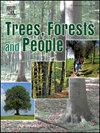Ethnobotanical study of traditional medicinal plants and associated indigenous knowledge in Melokoza District, South Ethiopia
IF 2.9
Q1 FORESTRY
引用次数: 0
Abstract
Preserving traditional medicinal knowledge and the community's relationship with plants is essential for environmental and health protection. This study documented traditional medicinal plants and community practices in the Melokoza from 2023 to 2024. A purposive sampling technique was employed to select sampled Kebeles. Overall, 390 respondents were identified to gather information on medicinal plants using a questionnaire survey. Preference Ranking, Fidelity Level, and Informant Consensus Factor were used to analyze the data. In general, 140 medicinal plants grouped into 115 genera of 56 families were identified in this study. Asteraceae was the most dominant family representing 19.3 % of the medicinal plants identified, followed by Lamiaceae (13.57 %). Leaves were the most commonly used part of the plants, making up 67.9 % of the plant parts used, followed by roots (10 %). Fresh plant parts were mainly used for medicine (85.71 %). Most medicinal plants were found in home gardens (27.86 %) and forest areas (22.86 %). Cold water extraction (56.92 %) was the most common method of traditional medicine preparation, followed by crushing (19.23 %). The most common way to take medicine was by drinking it in solution form. Croton macrostachyus was noted for its high preference ranking in treating wounds. The highest informant consensus factor value was recorded for stopping bleeding (0.98) and stopping vomiting (0.97) illness. The research showed that agricultural expansion is severely degrading traditional medicinal plants in Melokoza. Urgent conservation and sustainable management are needed, along with further study in the district.
埃塞俄比亚南部Melokoza地区传统药用植物和相关土著知识的民族植物学研究
保护传统医学知识和社区与植物的关系对环境和健康保护至关重要。这项研究记录了2023年至2024年梅洛科扎地区的传统药用植物和社区习俗。采用有目的的抽样方法对凯贝勒星进行抽样。总体而言,确定了390名受访者,通过问卷调查收集有关药用植物的信息。采用偏好排序、忠实度水平和知情者共识因子对数据进行分析。共鉴定出药用植物140种,隶属56科115属。菊科为优势科,占鉴定的药用植物总数的19.3%,其次为兰科(13.57%)。叶子是植物最常用的部分,占植物使用部位的67.9%,其次是根(10%)。新鲜植物部位以药用为主(85.71%);药用植物主要分布在家庭花园(27.86%)和林区(22.86%)。冷水浸提法是最常见的中药制备方法,占56.92%,其次是粉碎法,占19.23%。最常见的服药方式是以溶液形式饮用。大青豆在伤口治疗中具有较高的优先级。在止血(0.98)和止吐(0.97)疾病中,被告知者共识因子值最高。研究表明,农业扩张严重破坏了Melokoza地区的传统药用植物。迫切需要保护和可持续管理,以及对该地区的进一步研究。
本文章由计算机程序翻译,如有差异,请以英文原文为准。
求助全文
约1分钟内获得全文
求助全文
来源期刊

Trees, Forests and People
Economics, Econometrics and Finance-Economics, Econometrics and Finance (miscellaneous)
CiteScore
4.30
自引率
7.40%
发文量
172
审稿时长
56 days
 求助内容:
求助内容: 应助结果提醒方式:
应助结果提醒方式:


